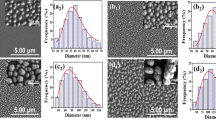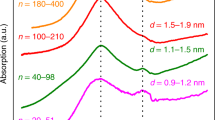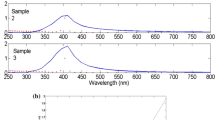Abstract:
The size evolution of the surface plasmon resonance was investigated for free and embedded silver particles between about 2 to 10 nm in size. The crystal lattice of such particles as analyzed by high resolution electron microscopy show linear contraction with reciprocal particle size. Based on this, a model was presented by combining the lattice contraction of particles and the free path effect of electrons to predict the size evolution of the resonance. The results reveal a contribution of the lattice contraction to the resonance shift according to a roughly linear relation that changes slightly with particle radius (> 1.0 nm) and surrounding media. This surface plasmon resonance shift proceeds linearly with reciprocal size for Ag particles in vacuum and argon, but for Ag particles embedded in glass it appears to be independent of the radius down to nearly 1 nm. All predictions are quantitatively compared to previously reported experimental data and a good agreement is obtained. An unusual red-shift observed for Ag particles in glass may be attributed to a thermal expansion mismatch induced lattice dilatation.
Similar content being viewed by others
Author information
Authors and Affiliations
Additional information
Received 26 July 2000 and Received in final form 14 September 2000
Rights and permissions
About this article
Cite this article
Cai, W., Hofmeister, H. & Dubiel, M. Importance of lattice contraction in surface plasmon resonance shift for free and embedded silver particles. Eur. Phys. J. D 13, 245–253 (2001). https://doi.org/10.1007/s100530170273
Issue Date:
DOI: https://doi.org/10.1007/s100530170273




